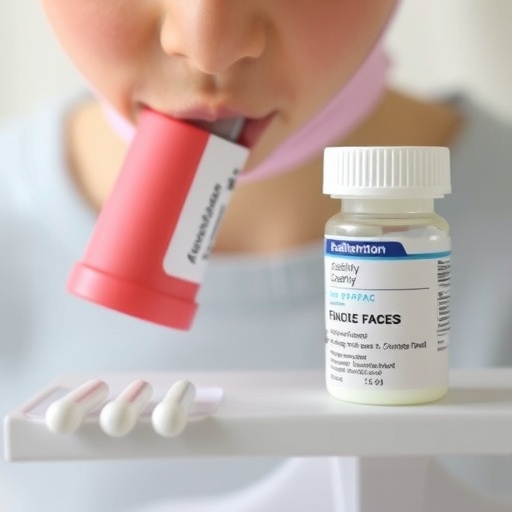In an era where patient autonomy and shared decision-making models are paramount, the dynamics of physician-patient interactions continue to evolve. Recently, a comprehensive study was conducted to delve into the attitudes of medical students regarding the ethical implications of persuading patients in clinical settings. This research is particularly relevant as it brings to light the delicate balance between guiding patients through their healthcare choices while respecting their autonomy. The findings underscore critical insights that can inform medical education and practice.
The research, spearheaded by Muckler, Thomas, and Shinkunas, explores the intricate dimensions of persuasion within the physician-patient relationship. Medical students, being the future frontlines of healthcare, are uniquely positioned to provide perspectives on this delicate issue. Their experiences and attitudes highlight not only their own training but also the broader cultural and ethical standards governing medical practice today. Understanding how these future physicians perceive persuasion offers invaluable insights into the evolution of medical ethics, particularly in shared decision-making contexts.
One of the significant revelations from the study is the varying definitions of persuasion among medical students. While the term may conjure images of coercion or manipulation, many students viewed it through a different lens—one that encompasses the idea of support and guidance. This nuanced understanding is vital, as it reflects the evolving nature of patient care wherein encouraging patient engagement is seen as an essential component of ethical practice. As students navigate their training, these perspectives could shape their approaches to patient interactions long into their careers.
Additionally, the research revealed that many medical students grapple with the ethical considerations surrounding persuasion. The notion of ethics in healthcare is complex and multifaceted, and students must navigate a landscape fraught with competing values. On one hand, there is a strong emphasis on patient autonomy; on the other, there exists the responsibility of the physician to provide recommendations based on medical knowledge and experience. This paradox raises significant questions about the extent to which physicians can advocate for certain treatments without infringing upon patient rights.
The findings further illuminate the role of mentorship and education in shaping aspiring physicians’ attitudes towards persuasion. Exposure to experienced mentors plays a crucial role in guiding medical students through the ethical ambiguities they will encounter in practice. By fostering environments that prioritize open discussions about the nuances of persuasion, medical education can empower students to develop a robust ethical framework. This supports not only their personal growth but also enhances the overall patient experience in healthcare settings.
Moreover, the study highlights the differences in perception based on clinical experience. Students with more exposure to patient interactions reported a deeper understanding of the ethical complexities involved in persuasion. Through clinical rotations, students gain practical experience that shapes their attitudes, allowing them to witness firsthand the impactful role of physician communication. Such experiences reinforce the importance of integrating clinical exposure earlier in medical training, ensuring students are well-prepared to engage with ethical dilemmas upon entering the workforce.
Importantly, the research suggests a greater need for formalized training on shared decision-making processes within medical curricula. Although students inherently grapple with these issues, structured education can facilitate deeper understanding and competency in navigating patient interactions. By equipping future physicians with the tools to effectively engage patients in shared decision-making, medical schools play a crucial role in fostering a healthcare environment that prioritizes ethics and empathy.
One of the pressing challenges identified in the study is the societal and cultural influences that impact students’ perceptions of persuasion. These influences can shape their beliefs about patient autonomy and the role of advocacy in healthcare. Students emerge from diverse backgrounds, each carrying distinct perspectives that can affect their approach to patient engagement. Recognizing and addressing these cultural dimensions will be vital in creating a more inclusive and ethical healthcare system, where patients feel empowered and respected.
Additionally, the findings suggest an evolving definition of success within the medical profession. Traditionally, success has been associated with clinical outcomes and efficiency; however, the study indicates that medical students increasingly recognize the value of patient satisfaction and ethical practice as equally important markers of success. This shift towards a more holistic understanding of patient care reflects broader changes within the healthcare landscape, wherein emotional and ethical considerations are only becoming more central.
Engagement with patients requires more than just technical knowledge; it demands a compassionate approach, one that is cognizant of the ethical implications of persuasion in the clinical context. As healthcare continues to evolve, so too must the training of medical professionals, ensuring they are prepared to engage with patients in a manner that respects their autonomy while also providing necessary guidance.
In conclusion, this research serves as a critical reminder of the complexities involved in physician-patient interactions and highlights the need for an ongoing dialogue around the ethics of persuasion. As medical education evolves, integrating discussions around these ethical considerations will be essential in shaping empathetic and competent physicians. Armed with a deeper understanding of the dynamics at play, future healthcare providers can better navigate the landscape of shared decision-making, ultimately leading to improved patient engagement and satisfaction.
This study is more than just an academic exercise; it is a reflection of the changing tides within the healthcare industry. Acknowledging the importance of fostering ethical communication practices among medical students is not only beneficial for their personal development but also instrumental in cultivating a future of healthcare that emphasizes both patient autonomy and effective physician guidance.
In the coming years, as this research prompts further discourse in academic circles, it will be essential for institutions to consider how best to adapt medical training to this evolving landscape. With shared decision-making taking center stage, adapting curricula to explicitly address these ethical dilemmas will be paramount. A new generation of physicians who understand the nuances of persuasion, ethics, and patient care will truly transform the field.
Subject of Research:
Attitudes and experiences of medical students regarding physician persuasion of patients in shared decision-making contexts.
Article Title:
Medical Students’ Attitudes and Experiences Regarding Persuasion of Patients by Physicians: Clarifying the Ethics of Shared Decision Making.
Article References:
Muckler, J., Thomas, J.C., Shinkunas, L. et al. Medical Students’ Attitudes and Experiences Regarding Persuasion of Patients by Physicians: Clarifying the Ethics of Shared Decision Making.
J GEN INTERN MED (2025). https://doi.org/10.1007/s11606-025-09807-w
Image Credits:
AI Generated
DOI:
10.1007/s11606-025-09807-w
Keywords:
Shared decision-making, medical ethics, physician-patient communication, medical education, persuasion, patient autonomy, medical students.
Tags: balancing persuasion and autonomycommunication strategies in healthcarecultural standards in medical practiceethical implications in healthcarefuture physicians’ views on ethicsguiding patient healthcare choicesmedical education and training insightsmedical ethics evolutionmedical student perspectives on persuasionpatient autonomy and shared decision-makingphysician-patient relationship dynamicsunderstanding persuasion in clinical settings





